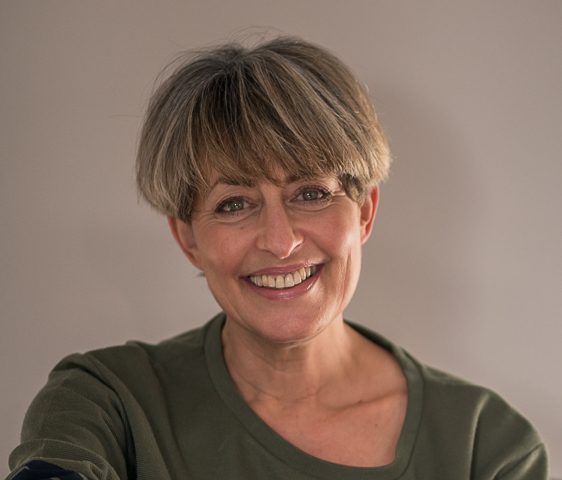Two memorable fashion exhibitions - Gabrielle Chanel. Fashion Manifesto and Beyond The Little Black Dress
In the past week I’ve been lucky enough to see not one, but two, tremendous fashion exhibitions, one nearly at the end of its run, one that’s only recently opened. They’re in two capital cities at opposite ends of the country - one in Edinburgh, one in London. And they’re both in museums that are more than worth visiting for the beauty of their buildings and the fascinating range of their collections and exhibitions alone.
Beyond the Little Black Dress is at the National Museum of Scotland until October 29th. Gabrielle Chanel. Fashion Manifesto opened at the Victoria and Albert Museum a couple of weeks ago and will be on display there until the end of February.
Beyond the Little Black Dress
One of the displays at Beyond The Little Black Dress at the Museum of Scotland
It’s hard for us to imagine today just how radical the first little black dresses were for women in the 1920s. Modern, loose, free from the historical constraints of women’s fashion and reinforcing the new attitudes of liberated womanhood, these were dresses to look modest and polished in, whilst simultaneously being bold and alluring.
This fascinating, wide-ranging exhibition explores the cultural references and reflections, design variety and future development of black dresses and the way they have, and continue, to be a signpost of societal and historical attitudes towards women.
In the Well-Mannered Black section, for example, the elegantly extravagant frills of Pierre Balmain from 1957, are on display alongside a fiercely feminine version from 2018 by designer Molly Goddard (actress Jodie Comer wore a pink version of the dress in Killing Eve).
Tulle and taffeta evening dress by Pierre Balmain 1957 (left). Nylon and tulle ‘Harriet Dress’ by Molly Goddard, 2018 (right)
Whilst the Subcultural Black part of the exhibition, explores how black has been adopted by various 20th century subcultural movements, from punk and goth to street wear. Here you’ll find memorable dresses like this one from designer Gareth Pugh’s Autumn/Winter 2013 collection made out of cut up bin bags, and this from designer Franco Moschino in 1988 featuring a skirt made up of bras.
Ensemble by Gareth Pugh, Autumn/Winter 2013 (left) Evening dress by Franco Moschino 1988 (right)
There’s insight into the challenges of designing in black, which former editor of Vogue, Diana Vreeland once said is the hardest thing to do because of the way it so starkly shows off, or up, the designer’s technical skill, or lack of it.
And a future facing, and futuristic, section examining the ways in which sustainable and smart technology approaches are tackling the issue that fashion is one of the most energy-consuming, polluting and wasteful of our modern industries. Something that’s exacerbated by our endless cycles of consumption, as I wrote about in THIS BLOG along with my own consumption challenge to each of us.
This is probably the most eye-opening section of the exhibition - with a video showing how designers are getting 3-D printed ‘fabric’ to drape and move like the real thing; a robotic dress which responds to colours in its immediate environment by expanding and contracting, making it look as if its rippling on its wearer’s body. And, with pure black being a notoriously difficult colour to achieve without considerable impact on the environment, a dyeing process that uses wood and iron water.
Kinematics dress 11 by Nervous System 2016 (left) made from 3D printed nylon. Flowing water, Standing time, by Ying Goa 2019 (right) made from silicone, organza, polyviylidene flouride and electronic components
If I had to pick my favourite and most memorable of all the dresses on display, the former would be this gloriously elegant gown by Alexander McQueen, whereas the dress by Gareth Pugh made of plastic drinking straws just pips the ones above into the latter slot (excuse the strange blue streaks on the pic, it’s tricky photographing through glass cases.)
Dress by Alexander McQueen Pre-Fall 2012, silk & nylon (right) Ensemble by Gareth Pugh, Autumn/Winter 2015, plastic drinking straws, patent leather, stretch leather & felted wool (left)
Beyond The Little Black Dress is at the National Museum of Scotland until October 29. Opening times, promo video and ticket information HERE
Gabrielle Chanel. Fashion Manifesto
Gabrielle Chanel. Fashion Manifesto at the Victoria and Albert Museum
Where the outfits on display in Beyond the Little Black Dress are a combination of interesting, beautiful, challenging and strange, every one of the pieces in the Chanel show, the first UK exhibition dedicated to the work of the iconic designer is, quite simply, exquisite.
The V&A has a well-deserved reputation for putting on blockbuster exhibitions dedicated to the work of fashion designers and especially for their spectacular staging. Where the one devoted to Alexander McQueen, for example, was theatrical and showy, like the man and his designs, A Fashion Manifesto is refined, elegant and sophisticated, exactly like the complex and sometimes controversial woman whose innovative ideas and pioneering approach to fabric and construction, and determined design principles of comfort, simplicity and ease of movement, changed womens’ fashion forever and who remains an enduring influence on the clothes we wear today.
Gabrielle ‘Coco’ Chanel in front of her boutique in Deauville, 1913 (left), and at her atelier in Paris in 1962 (right)
I could just show you a selection of the pictures I took (and ask your indulgence for yet more strange reflections and shards of light. See above excuse) of some of the 200 glorious pieces on display in the exhibition, including sections about her signature accessories, the jewellery designers she worked with and the equally iconic perfumes she created - none of which do justice to the experience of seeing the astonishing craftsmanship and sublime design details up close - and leave it at that. But I can’t resist adding in a sprinkling of what learnt about Coco’s remarkable life and career from the informative and revealing narrative display panels.
Like the fact that she effectively became an orphan aged 12 when her mother died and her father deserted in an orphanage. And that at 18 she went to live with her aunt, who was only a few years older than her, and started working as a haberdashery seamstress.
Gabrielle began her career as a milliner, opening her first salon in 1909 selling hats from an apartment in Paris. The success of that enabled her to move to to 21 rue Cambon, where the Chanel headquarters still are to this day, a year later. And to expand into clothing and a couture salon in Biarritz in 1915.
Her early, minimalist, designs, using supple materials like jersey were defiantly different to the excessively decorative fashions of the day, and reflected the changing role of women in society after the First World War.
She was obsessively interested in fabrics, often working with materials unusual for haute couture such as tweed, and in the late 1920s established her own textile company
She was an enthusiastic Anglophile, opening a salon in London in 1927, and establishing the British Industries Fair in 1932 in order to work directly with UK textile manufacturers.
The first time she used the iconic interlocking Cs as her brand logo was on the Art Nouveau-inspired bottles for her first perfume - Chanel No5.
Coco often used a technique when designing her eveningwear that entirely covered the surface of fabrics with beads, in effect creating an entirely new fabric.
She closed her couture house when war broke out in 1939. It would be 15 years before she returned to designing at the age of 71.
Her wartime activities, including a relationship withe a German embassy worker who had been exposed as a spy, acting as an occasional agent for the French Resistance and becoming part of a German intelligence operation, led to her being detained and interrogated. She was released without charge.
The defining design of Chanel’s post-war career was the suit. The many iterations, by her and subsequent Chanel designers, stayed true to its fundamental silhouette and simplicity, making it a timeless classic.
Every Chanel suit jacket has a gilded metal chain sewn along the bottom of the hem. A discreet signature that ensures it falls elegantly with every gesture and movement made by the owner.
Her signature 2.55 bag, was named after the month and year it was created
Chanel continued to innovate right up to her final collection, which was shown on January 26th 1971, two weeks after her death aged 87. It featured 76 looks. According to The Times, it was Chanel at her best.
Picking just one favourite or memorable dress from so many impossibly beautiful options (I can’t tell you how many more I took pictures of. I’m forcing myself to be restrained and not sharing them all with you) is like being asked to choose your favourite child. I could have stared at any one of them for hours. But I found it especially hard to tear my gaze away from these glorious, shimmering, fringed evening dresses - especially the blue one - which apparently Coco loved to wear herself.
Gabrielle Chanel. Fashion Manifesto is at the Victoria and Albert Museum until 25 February 2024. Opening hours and ticket information is HERE Tickets are currently sold out (I’m not sure if they’ll release more in time), but you can get in to this, the museum and any other exhibitions at any time, as well as supporting the wonderful work they do, by becoming a member of the V&A, which you can do from £77 a year. More information about that HERE





















